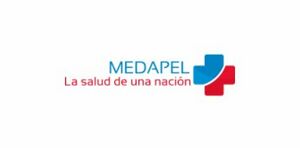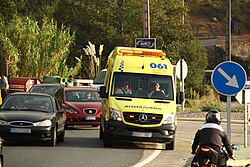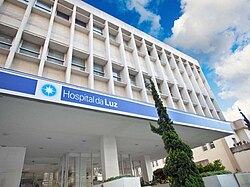Social security in Pelaxia
| This article is part of a series on the |
| Politics of Pelaxia |
|---|
 |
Social security and healthcare in Pelaxia is heavily influenced by a long history of Christian democracy policies mixed with pelaxian socialism and marxism, with an overall heavy presence of the government either as a provider or a regulator. It is mostly conducted by the Ministry of Labor and the Ministry of Social Policy. Social security in Pelaxia is codified on the Política Social (POLSOC) contains 13 main parts, including the following,
- Old age, widow's/widower's, orphans and disability pension insurance (POLSOC I)
- Unemployment insurance and public employment agencies (POLSOC II and III)
- Child support (POLSOC lV)
- Health insurance (POLSOC V)
- Invalidity insurance (POLSOC VII and IX)
- Social care (POLSOC XI)
- Programa Alimentario Nacional (POLSOC Xll)
- Universal Child Allowance Card (POLSOC Xlll)
Pensions Programmes II
(WIP)
Unemployment Insurance and Benefits II

The unemployment benefit l in Pelaxia is also known as the unemployment insurance. The insurance is administered by the Agencia Federal de Trabajo (Federal Work Agency) and funded by employee and employer contributions. This in stark contrast with other systems; where only employers make contributions. Participation (and thus contributions) are generally mandatory for both employee and employer. All workers with a regular employment contract, except freelancers and certain civil servants, contribute to the system. Since 2000, certain previously excluded workers have been able to opt into the system on a voluntary basis.
The system is financed by contributions from employees and employers. Employees pay 1% of their gross salary below the social security threshold and employers pay 2.0% contribution on top of the salary paid to the employee. Contributions are paid only on earnings up to the social security ceiling. The system is largely self-financed but also receives a subsidy from the state to run the Job centers.
Unemployed workers are entitled to:
- Living allowance known as unemployment benefit
- Help in finding work
- Training
Unemployed benefit is paid to workers who have contributed at least during 12 months in a 24 month period preceding their loss of a job. The allowance is paid for 12 months to claimants below the age of 50. Above the age of 50 the allowance period climbs up to 24 months at the age of 58, provided the claimant has contributed for at least 48 months. Claimants get 60% of their previous net salary (capped at the social security ceiling), or 67% for claimants with children.
Unemployment benefit II
If a worker is not eligible for the full unemployment benefits or after receiving the full unemployment benefit for the maximum of 12 months, he is able to apply for benefits from the so-called Obregón Programme, an open-ended welfare programme. A person receiving Obregón benefits is paid 432 NSD a month for living expenses plus the cost of adequate housing (including heating) and health care. Couples can receive benefits for each partner including their children. Additionally, children can get "benefits for education and participation". Since 2008 Pelaxia does have an EBT (electronic benefits transfer) card system to distribute welfare through it or onto the recipient's bank account.
Child Support IV
The child care system in Pelaxia can be seen as universal in coverage. It is viewed as a public problem shared by multiple roles of the society: parents, regional and local governments, non-profit organizations (usually churches) etc. Pelaxia offers a wide range of child care programs for parents: day care centers (Guardería) for children up to age 3, preschool programs (Jardín de Infantes) for children from age 3 to 5, primary schools for school-age children. Around ninety-eight per cent of Pelaxian daycare is non-for-profit and is heavily funded by the government. Ninety per cent of the costs are paid by state, provincial and local governments through public taxes while the rest of the cost is paid by the parents.

Regulations of day care are enforced by provincial youth office in each province, which distributes funds to day care centers according to a certain amount. Even though the enforcement is in a relatively decentralized form, there is still high conformity on regulatory requirements of the day care centers among different provinces. Pelaxian child care system values highly of the quality of teaching staffs. In every province, a teacher must complete four to five years of training requirements, usually composed of one to two years of practice, two years of college, and one year of additional practice. The tougher regulation on teachers' training requirements ensures the quality of child care service to some extent. There is no big market for private day care in Pelaxia. Only 4% to 10% of mothers employ child minders in 2015. The main reason for this is that private child care providers cannot maintain profitability when facing the competition from the public providers which are generously funded by the government. And the high barrier to enter the market set by the government becomes one of the hinders.
In many social studies, child care policy together with social norms about gender roles have cast big impact on women's participation in labor force and fertility choice. Pelaxia has one of the lowest fertility rate among Sarpedonian countries. Women in Pelaxia, as in many other countries, face the dilemma between work and family. The Pelaxian government provides paid parental leave for both parents. Apart from maternity leave, parents are also entitled to a paid leave if their children are ill at home.
Health Insurance V
Pelaxia has a universal multi-payer health care system with three main types of health insurance:
- "Statutory Health Insurance" (Fondos Comunes de Salud) known as sickness funds,
- "Private Health Insurance" (Medicina Prepaga Privada) and
- “Medical Assistance for Pelaxians” (MEDAPEL) provided by the government.
Health insurance is compulsory for the whole population in Pelaxia. Salaried workers and employees below the relatively high income threshold of more than 70,000 NSD per year are automatically enrolled into one of currently around 105 public non-profit "Fondos de Salud" at common rates for all members, and is paid for with joint employer-employee contributions. Provided payment is negotiated in complex corporatist social bargaining among specified self-governed bodies (e.g. physicians' associations, workers unions and the province) at the level of federal provinces. The sickness funds are mandated to provide a unique and broad benefit package and cannot refuse membership or otherwise discriminate on an actuarial basis.
-
San Pablo Hospital in Villa Septintria.
-
Ambulance on a road in Montia.
-
Carlos Ortigoza Hospital in Alabalitor.
-
Da Luz Hospital in Termia.
Besides the "Statutory Health Insurance" (Fondos de Salud) covering the vast majority of residents, the better off with a yearly income above almost 70,000 (NSD), students and civil servants for complementary coverage can opt for private health insurance (about 11% of the population). Most civil servants benefit from a tax-funded government employee benefit scheme covering a percentage of the costs, and cover the rest of the costs with a private insurance contract. Recently, private insurers provide various types of supplementary coverage as an add upon of the SHI benefit package (e.g. for glasses, coverage abroad and additional dental care or more sophisticated dentures).
MEDAPEL

MEDAPELs the publicly-funded universal health care insurance scheme in Pelaxia, operated by the nation's Ministry of Health and Wellness. It is the main way unemployed, veterans and pensioned Pelaxian citizens access most health care services in Pelaxia, fully covering the cost of most primary health care services in the public and private health care system. International visitors from Cartadania have subsidised access to medically necessary treatment under reciprocal agreements. All Pelaxian citizens and permanent residents enrolled in MEDAPEL have access to health care in public hospitals.
Many specialties and allied health services are partially covered by MEDAPEL, including laboratories, psychology and psychiatry, ophthalmology, physiotherapy and audiology, with the exception of dental services. The list of services covered, the standard operating fee for the service, and the portion of that fee covered, is set out in the Medapel Benefits Schedule (MBS).
The scheme was created in 1967 by the Tolosa Government under the name "Medibank". The Samano Government made significant changes to it from 1979, including it's abolition in late 1982. The Meireles Government reinstated it in 2011 under the name "MEDAPEL" and as a basic safety net. Medibank continued to exist as a government-owned health insurance provider until it was privatised by the Canales Government in 2017.
It functions as the public healthcare system and service for all citizens of Pelaxia, encompassing both national public medical facilities in any of the country's jurisdictions, the remote healthcare service, and even a federal ambulance service. The system is financially sustained partly through federal taxes via the income tax, but primarily through the National Sovereignty Fund. MEDAPEL is presently nominally funded through the FOSNA system and a tax known as the MEDAPEL levy, which is currently 2% of a resident taxpayer's taxable income.
There is a level of social stigma surrounding the service. Being a national coverage system for all citizens, it is associated with a lower social status and a precarious economic level, as well as with poor service, despite showing average levels of care and quality for the region.
Invalidity Insurance VII and IX
(WIP)
Social care (POLSOC XI)
(WIP)
Programa Alimentario Nacional (POLSOC Xll)

The Programa Alimentario Nacional (PAN), formerly known as the Programa de Alimentos para la Niñez, is a federal program that provides food-purchasing assistance for low- and no-income people. It is a federal aid program, administered by the Ministry of Social Policy, though benefits are distributed by specific departments. PAN benefits supplied roughly 20 million Pelaxians in 2024, at an expenditure of $57.1 billion. Approximately 15.2% of Pelaxian households obtained PAN benefits at some point during 2023, with approximately 16.7% of all children living in households with PAN benefits.
The amount of PAN benefits received by a household depends on the household's size, income, and expenses. For most of its history, the program used paper-denominated "stamps" or coupons bound into booklets of various denominations, to be torn out individually and used in single-use exchange. Their rectangular shape resembled a Salia bill (although about one-half the size), including intaglio printing on high-quality paper with watermarks.
In 2010, the Food Stamp Program was revamped, with the Pelaxian Government phasing out actual stamps in favor of a specialized debit card system known as Electronic Benefit Transfer (EBT), provided by private contractors. EBT has been implemented in all provinces since June 2012. Each month, PAN benefits are directly deposited into the household's EBT card account. Households may use EBT to pay for food at supermarkets, convenience stores, and other food retailers, including certain farmers' markets.
Universal Child Allowance Card (POLSOC Xlll)
In 2016, the Pelaxian Universal Child Allowance, or AUH in spanish, replaced the Pelaxian Child Tax Benefit. The government made this change to make more money available to parents with lower incomes. The AUH is a tax-free monthly payment made directly to families with children under 18 years old via EBT Card. It’s handled by the Ministry of Social Policy, but parents aren't required to include it on their income tax return.
Monthly AUH payments are based on:
- The number of children in your care.
- The age of the children.
- Your marital status.
- Your adjusted family net income from the previous year’s tax return.



